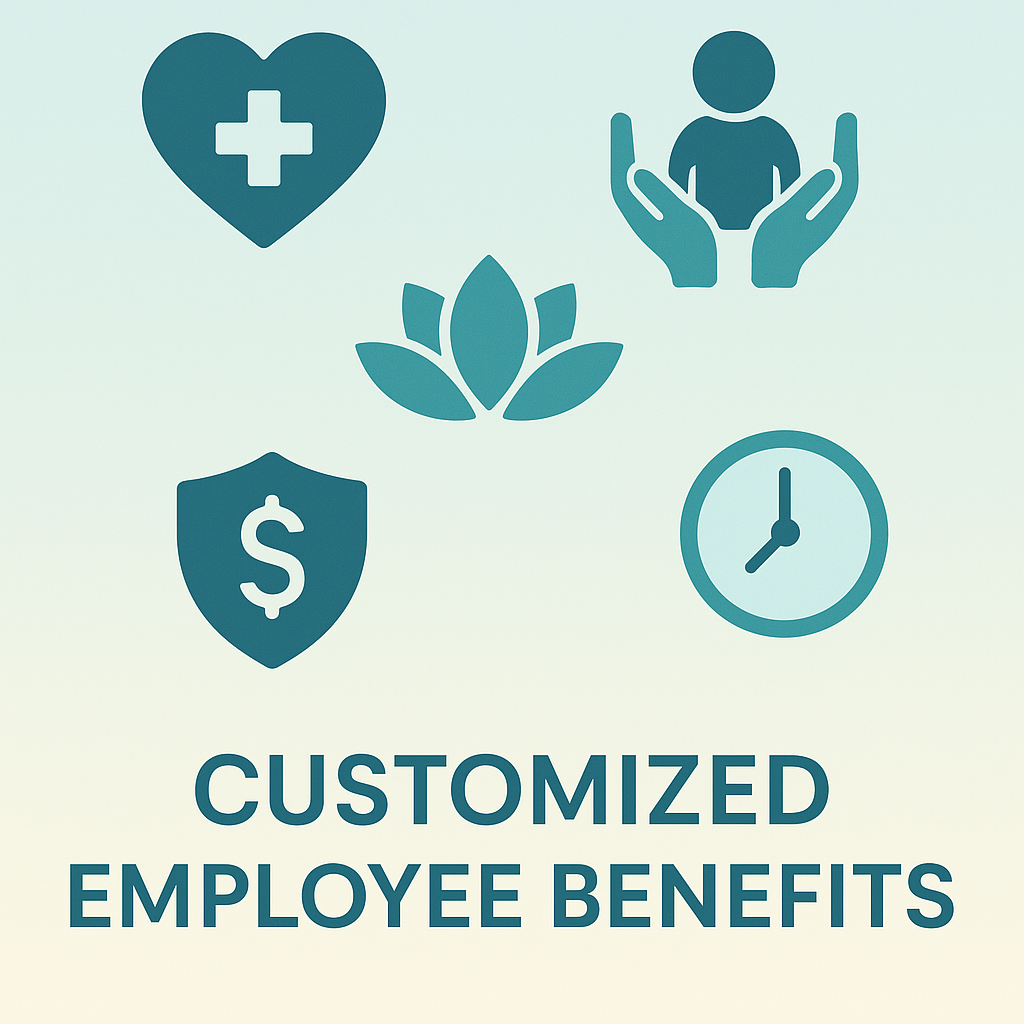Introduction
In today’s hyper-competitive talent market, offering personalized employee benefits is not just a progressive perk: it’s a strategic necessity. As organizations grapple with rising turnover and the high cost of replacing talent, a growing number of employers are embracing personalized approaches to create stronger bonds with their workforce. This strategy drives lasting engagement and helps build a more resilient and loyal team. This article explores how tailored benefits programs directly influence employee satisfaction, why they are more effective than traditional one-size-fits-all packages, and what practical steps HR leaders can take to implement flexible, high-impact solutions that resonate with a diverse workforce.
The Cost of Employee Turnover and the ROI of Retention
The financial implications of employee retention have reached a critical point. Replacing a single employee can cost anywhere from one-half to two times their annual salary, a figure that has a compounding negative effect across an organization, especially when it involves critical roles. High turnover leads to more than just financial loss; it disrupts team synergy, erodes morale, and depletes valuable organizational expertise.
Recent data highlights a significant trend: 51% of employees are considering new opportunities, and 42% cite reasons beyond salary, such as a need for more meaningful benefits, recognition, and support for holistic well-being. Investing in modern, tailored benefits packages is a proactive measure that delivers a strong return by fostering a culture where employees feel valued and understood, significantly boosting employee retention and profitability.
Understanding Custom Employee Benefits
Custom employee benefits, also known as flexible or personalized benefits, empower employees to choose rewards and support systems that genuinely align with their personal needs and life stages. This modern approach moves beyond traditional, uniform offerings by acknowledging the diverse priorities of a multigenerational workforce.
For example, a single parent may prioritize childcare support and comprehensive healthcare, whereas a younger, single employee might find more value in student loan repayment options, professional development funds, or wellness programs. This level of employee benefits personalization is typically facilitated through digital platforms, such as those provided by GoKlaim, which use employee-driven data and analytics to continuously refine and adapt the benefits available, ensuring they remain relevant and impactful.
How Personalized Employee Benefits Work
Modern approaches to personalized benefits leverage technology to create a seamless and user-friendly experience. Employees are given access to a digital benefits platform where they can select from a curated menu of options within a predefined budget. This model ensures that costs remain predictable for the employer while maximizing the perceived value for the staff.
The process is straightforward: HR configures the platform with a variety of modular options, such as health and wellness spending accounts, parental leave enhancements, learning credits, and remote work resources. Employees then allocate their benefit allowance to the items that best suit their individual needs. Platforms like GoKlaim automate the entire process, from benefits delivery and expense reimbursement to tax compliance, making sophisticated benefits administration accessible even for smaller organizations. These systems also provide valuable analytics, allowing HR to track which benefits are most popular and adjust their offerings in response to emerging trends.
Why Employee Benefits Personalization is Important
Personalization has become a core expectation in the modern workplace. Research consistently shows that a primary predictor of retention is job satisfaction, which is increasingly tied to employees feeling seen and valued as individuals. A standardized benefits package communicates a transactional relationship, suggesting that all employees are treated the same regardless of their unique circumstances.
In contrast, personalized packages send a powerful message of individualized care and support, acknowledging each employee's distinct priorities. This sense of personal consideration is a proven catalyst for increased engagement, deeper loyalty, and greater discretionary effort, creating a workplace culture where employees feel genuinely connected to the organization’s mission and values.
Advantages of Personalized Employee Benefits
Custom benefits deliver far-reaching advantages that positively impact recruitment, retention, engagement, and overall company culture. By giving employees the power to choose, these programs foster a more inclusive and supportive environment.
- Greater satisfaction: When employees can select benefits that matter to them, the perceived value of their compensation package increases, reducing the frustration often associated with irrelevant perks.
- Enhanced retention: Staff who feel their individual needs are met are significantly less likely to seek opportunities elsewhere, particularly when they see their employer is responsive and evolves with them.
- Stronger engagement: Personalized support allows employees to bring their full, authentic selves to work, leading to higher levels of motivation, creativity, and productivity.
- Recruitment edge: Top talent, especially from younger generations, actively seeks employers known for offering flexible employee benefits and robust wellness support.
- Diversity, equity, and inclusion: Customization ensures that all employees, including remote workers, part-time staff, and caregivers, can derive equitable value from the company’s benefits program.
Together, these outcomes strengthen the employer brand, improve productivity, and ensure that compensation investments translate into real, measurable value for both employees and the business.
Custom Benefits vs. Standard Packages: A Narrative Comparison
Historically, standardized benefits were the norm, typically including comprehensive health insurance, retirement savings plans, and a few modest perks applied universally. While these foundational benefits provide a necessary layer of security, they rarely inspire genuine emotional connection or enthusiasm. In contrast, custom employee benefits enable organizations to move beyond the basics and create a more meaningful employee experience. For instance, a tech startup might use a flexible benefits platform to allow its staff to choose between a mental health stipend, fertility treatments, or tuition reimbursement. This approach ensures that all employees, despite their different values, feel equally supported and appreciated. The fundamental difference lies in relevance and choice. Standard packages often waste resources on underutilized benefits, whereas personalized platforms ensure every dollar is spent effectively, delivering tangible value to both the employee and the employer.
The Role of Modern Benefits Technology
The adoption of modern benefits administration software and cloud-based platforms has transformed what is possible for employers of all sizes. These technologies provide intuitive interfaces where employees can self-select their benefits, allowing companies to adapt quickly to the evolving needs of their workforce. Platforms are also designed to secure sensitive data, automate compliance, and provide HR with actionable insights into which benefits truly resonate with employees. This technological shift has leveled the playing field, making it possible for small and mid-sized businesses to offer competitive and flexible benefit packages that were once only available at large corporations.
Implementing Flexible, Custom Employee Benefits: Best Practices
Transitioning to a flexible benefits model is an achievable goal for any business, provided the process is employee-centered and well-communicated. A thoughtful rollout is key to ensuring success and maximizing the return on investment. The first step is to thoroughly understand your workforce by identifying demographic, generational, and lifestyle differences. From there, you can move forward with designing a program that truly meets their needs.
- Internal assessment: Benchmark current benefit offerings and analyze utilization rates to identify underperforming programs.
- Employee consultation: Conduct confidential surveys to learn which benefits are most valued and what might be missing from current packages.
- Platform selection: Choose a digital platform that aligns with your company’s scale, complexity, and administrative capacity.
- Clear communication: Launch with engaging content that explains new offerings and highlights how employees can personalize their packages.
- Continuous feedback: Regularly gather input from your team and adapt offerings annually to ensure they remain relevant.
By aligning design, technology, and communication, HR teams can deliver a benefits experience that employees understand, trust, and actively use—driving measurable gains in satisfaction and retention.
Personalizing Wellness and Health Spending Accounts
Health Spending Accounts (HSA) and Wellness Spending Accounts (WSA) are prime examples of how organizations can offer flexible and personalized support for employee well-being. HSAs allow employees to use pre-tax dollars for eligible medical expenses, giving them greater freedom in choosing their healthcare providers and coverage options. WSAs expand on this flexibility by covering a broader range of wellness-related activities, including fitness memberships, mental health services, and recreational programs. An increasing number of organizations across North America are adopting these modular accounts, either as standalone options or as supplements to traditional health plans. These accounts are a powerful way to recognize individual wellness priorities and adapt to shifting health trends, making them a cornerstone of modern benefits strategies in both employee benefits Canada and the USA.
Custom Employee Benefits for SMEs and Remote Teams
Flexible, digital-first benefits solutions have become particularly popular among small and midsized businesses (SMEs) and organizations with distributed workforces. In the past, the cost and administrative complexity of individualized packages made them inaccessible to smaller companies. Today, platforms designed specifically for the benefits platform for SMEs market deliver affordable and scalable options without the administrative burden. Furthermore, effective remote employee benefits management ensures that all team members, regardless of their location, receive equitable and meaningful support. Features like wellness allowances, virtual health credits, and localized perks empower smaller companies to compete for top talent on a global scale.
Conclusion
Personalized employee benefits are no longer a passing trend; they are a critical component of a comprehensive strategy for retention, engagement, and long-term business success. By implementing flexible, user-focused platforms, organizations can deliver real, tangible value that meets the evolving needs of their employees. This commitment to individual well-being helps secure a company’s most valuable asset: its people. As the workplace continues to evolve, the ability to offer customized support will be a key differentiator in attracting and retaining the brightest talent, solidifying a lasting reputation for innovation and care.
Build a workplace that truly supports your people.
Start with GoKlaim.
Frequently Asked Questions (FAQs)
How do personalized employee benefits work?
Personalized employee benefits allow staff to select from a menu of options, such as various health plans, wellness accounts, and other perks, all within an employer-defined budget. This selection process is typically managed through a user-friendly digital platform.
What are the advantages of personalized employee benefits?
Tailored benefits are designed to improve employee satisfaction, enhance retention rates, boost engagement, and promote a more inclusive workplace culture. They ensure that every employee receives tangible value from their benefits package, which in turn fosters loyalty.
Why is employee benefits personalization important?
Benefits personalization is crucial because it clearly demonstrates that a company values the individual needs and circumstances of its employees. This recognition directly contributes to higher job satisfaction, increased loyalty, and improved overall retention.
Can employees choose their own benefits?
Yes. With flexible benefits platforms, employees are often given the freedom to allocate their benefits allowance across a variety of available options. This allows them to customize their support system to fit their specific life stage and personal priorities.
How do you set up a wellness spending account for employees?
Employers can partner with a benefits platform provider like GoKlaim to create and administer wellness accounts. These accounts allow staff to spend allocated credits on a wide range of approved health, fitness, and well-being expenses.
What is a health spending account?
A health spending account is a flexible, tax-advantaged arrangement that employees can use to pay for qualifying medical and health-related expenses not covered by their primary insurance plan.
How do wellness allowances improve employee retention?
Wellness allowances give employees the autonomy to invest in their own health and happiness, which boosts their overall well-being and sense of being cared for by their employer. This appreciation often translates into greater loyalty and a higher likelihood of long-term retention.
What is the difference between an HSA and a WSA?
An HSA is typically used for pre-tax dollars to cover eligible medical expenses, adhering to specific government regulations. In contrast, a WSA generally covers a broader range of lifestyle and wellness expenses and is often treated as taxable income.
How does benefits personalization impact employee satisfaction?
Personalization gives employees a sense of control and agency over their compensation package. Feeling seen and valued by an employer who caters to their individual needs leads directly to higher job satisfaction and engagement at work.
Can small businesses offer customized benefits?
Yes. With modern digital platforms and scalable solutions, small businesses can efficiently and affordably offer tailored benefits packages that help them compete for talent with much larger employers.










 CompanyContact us
CompanyContact us






























